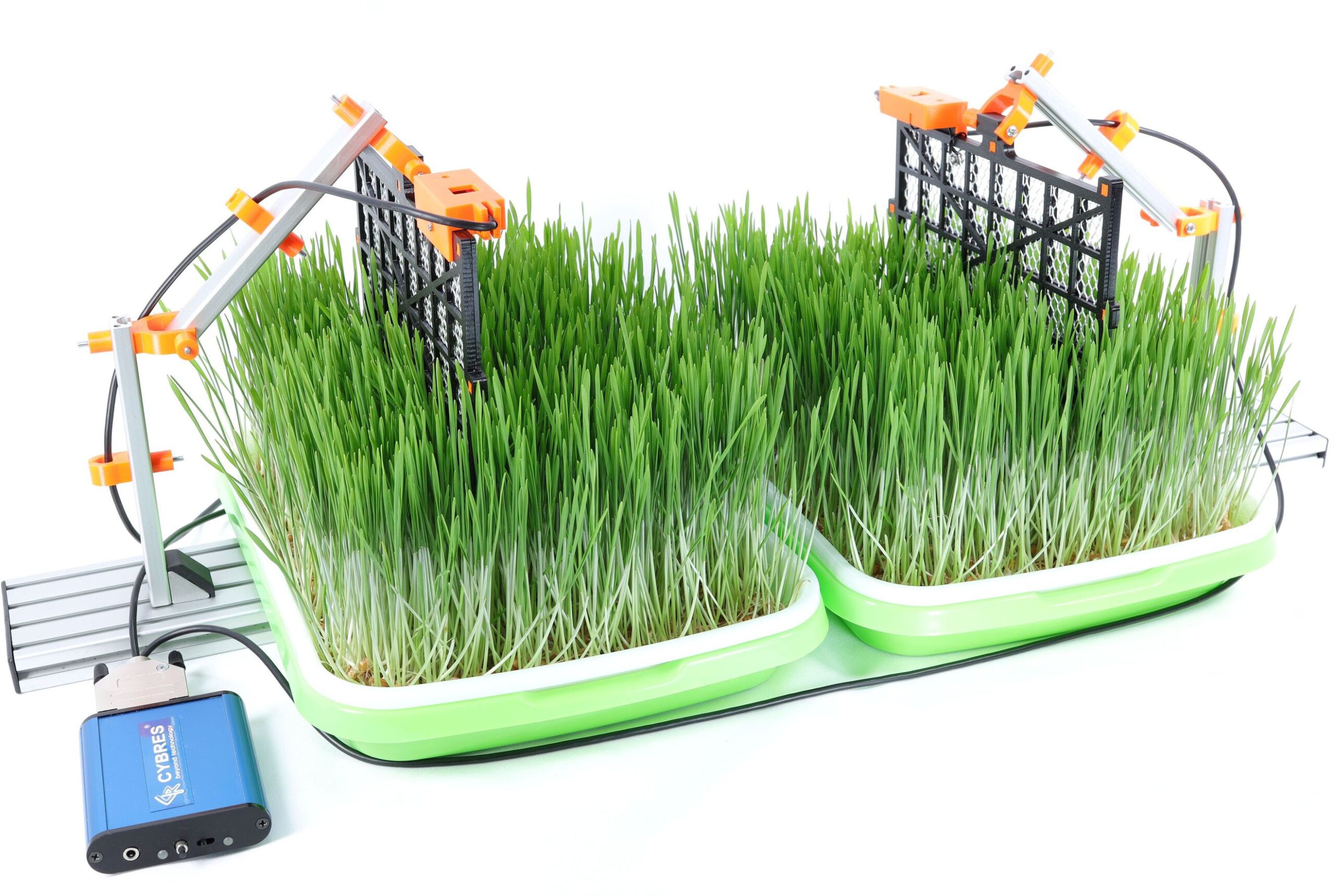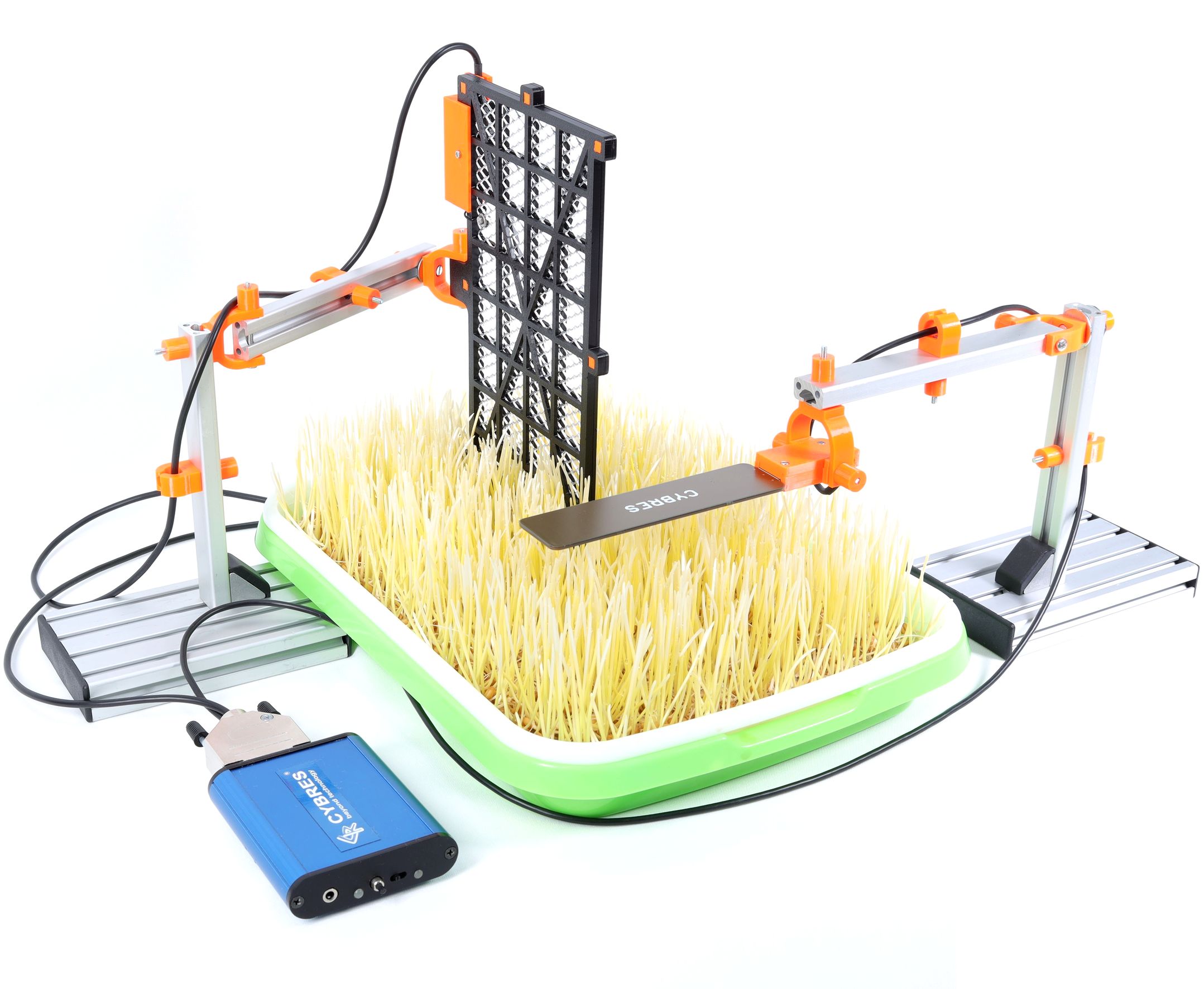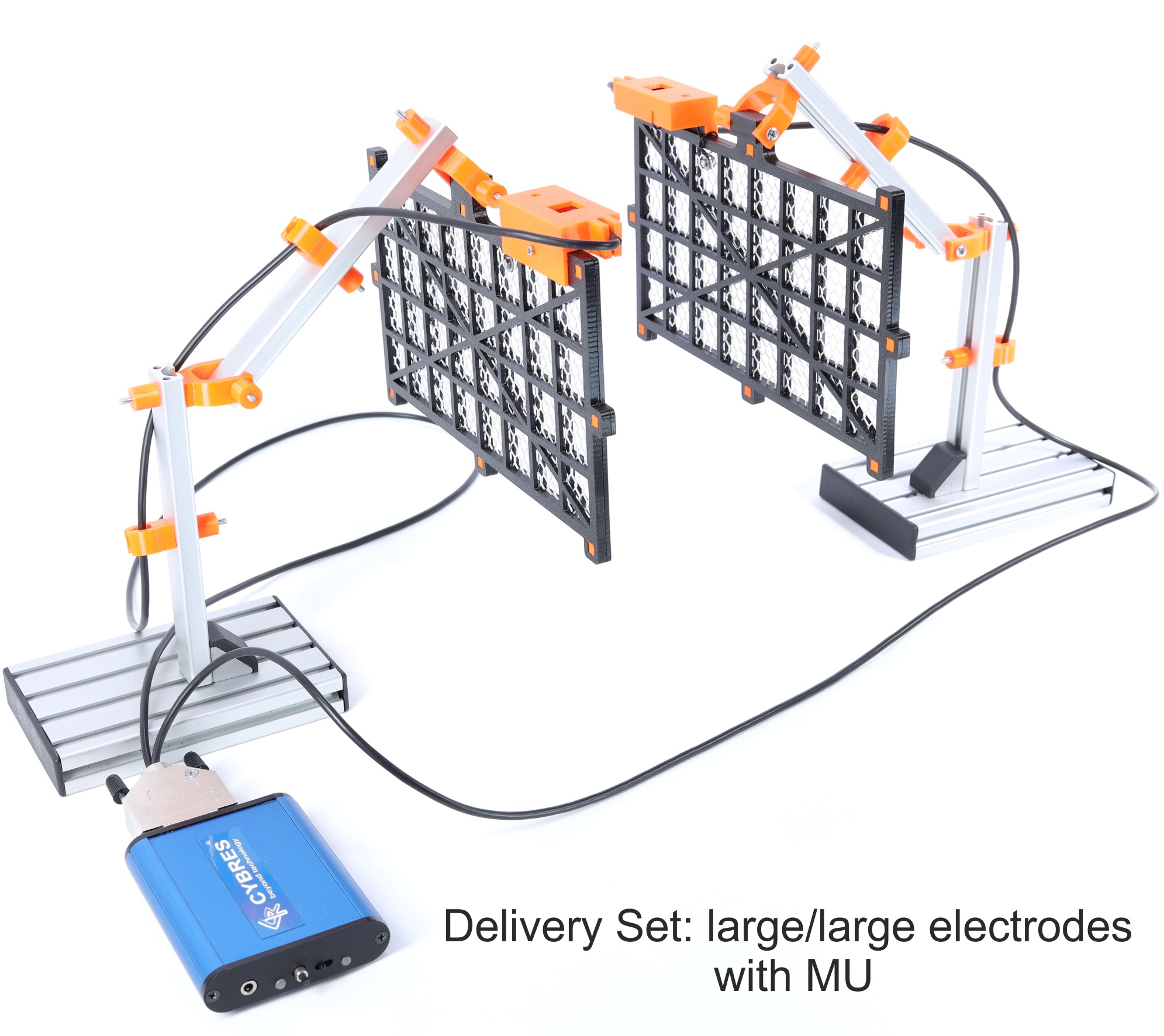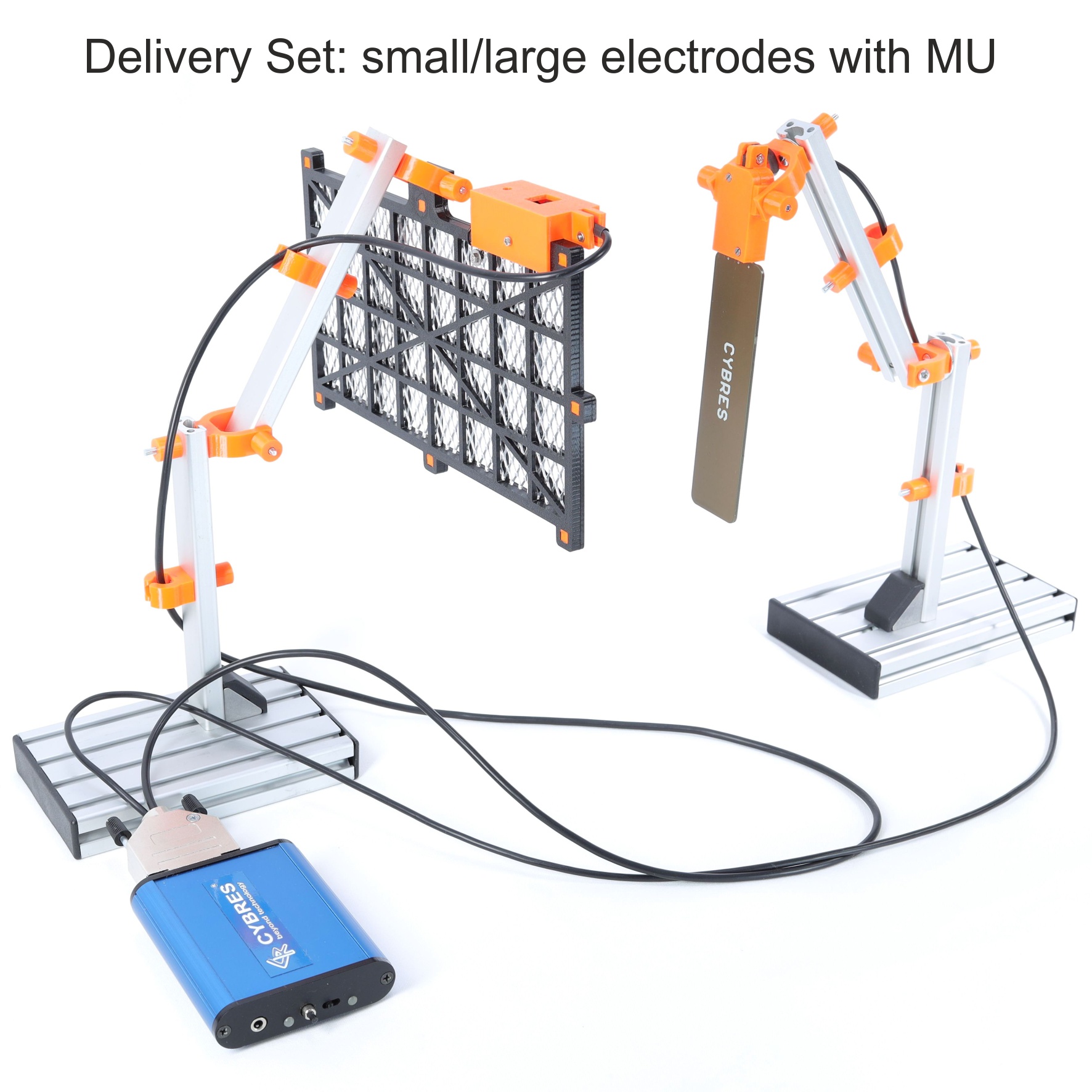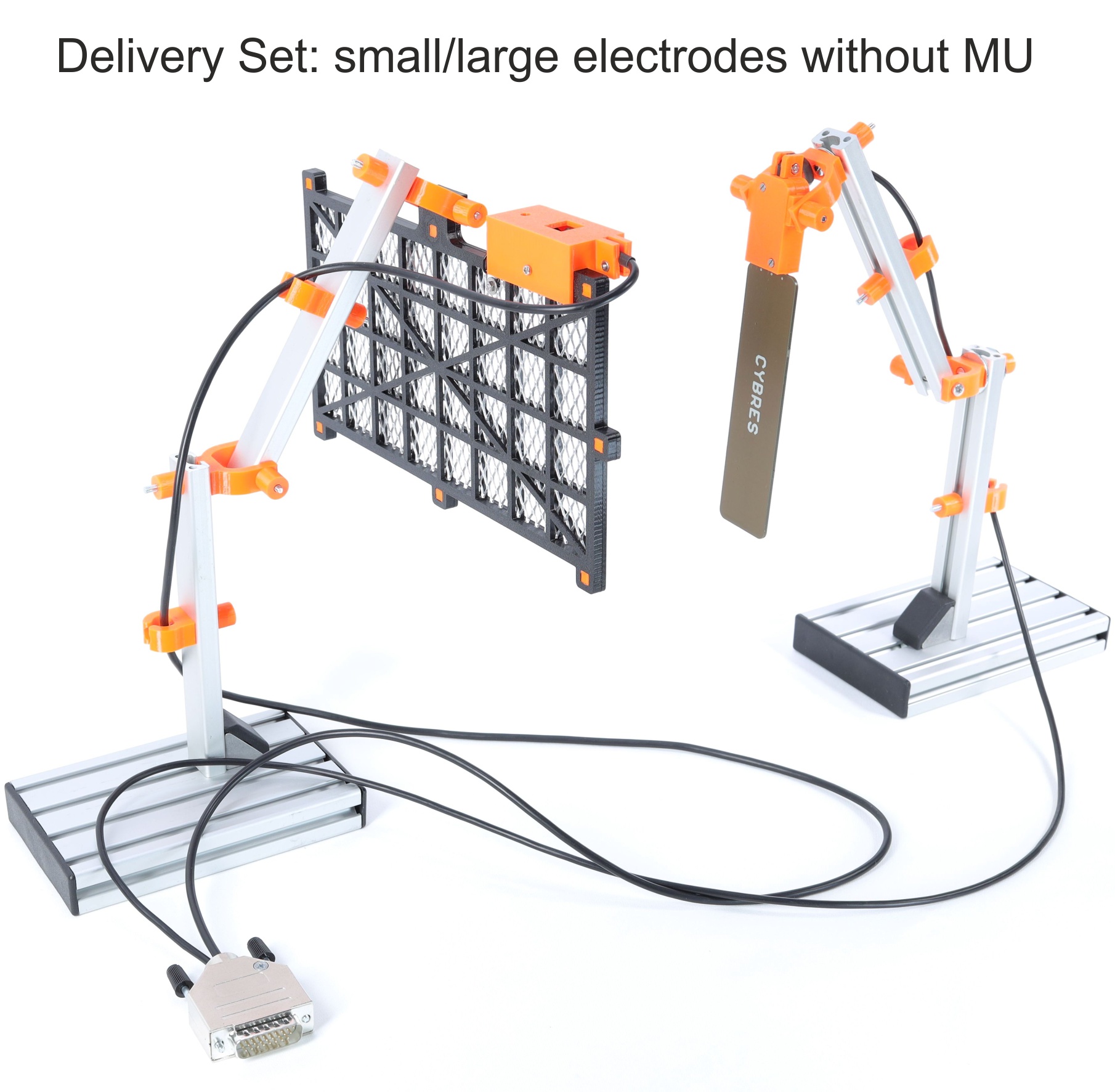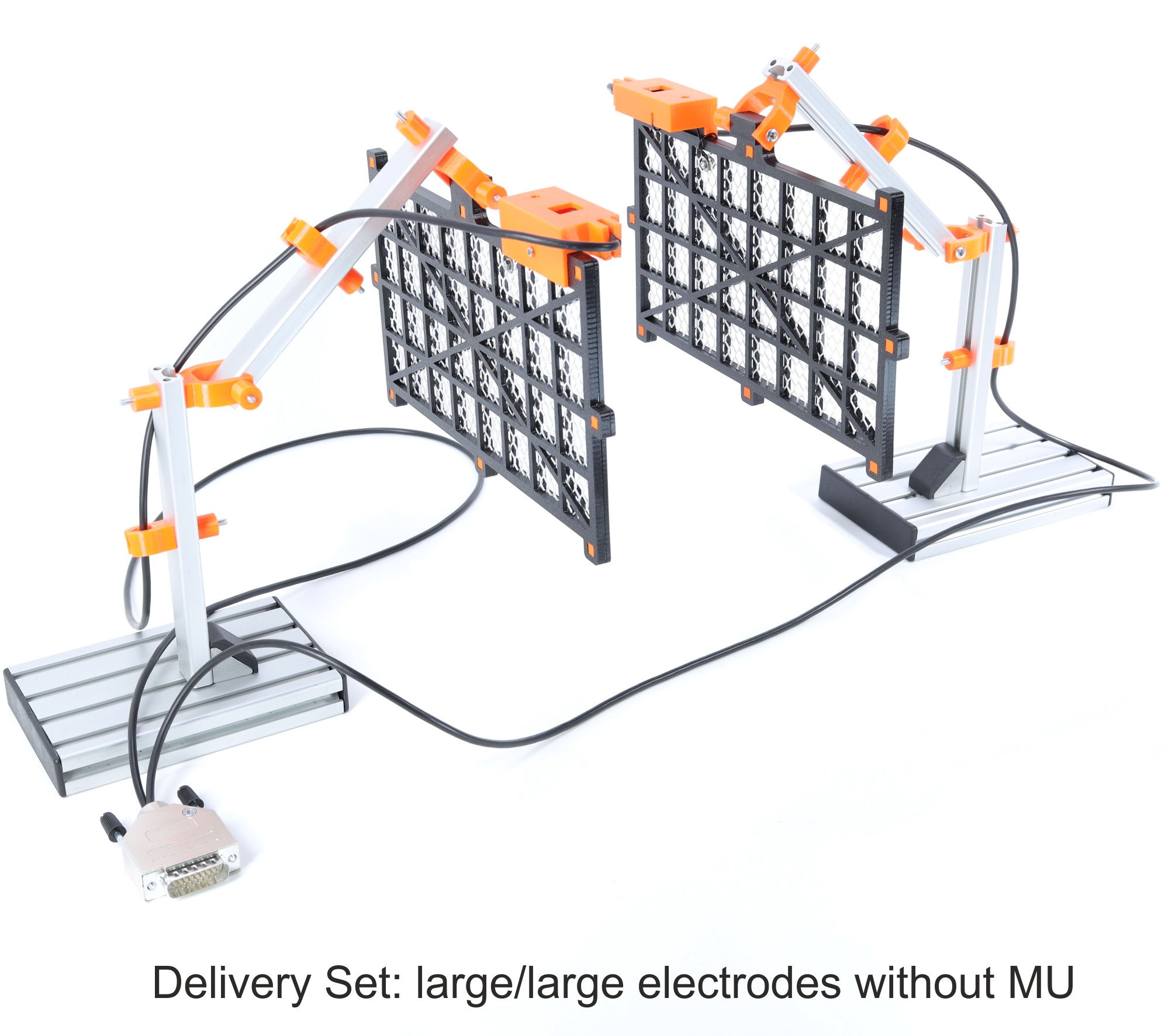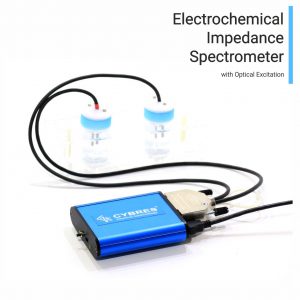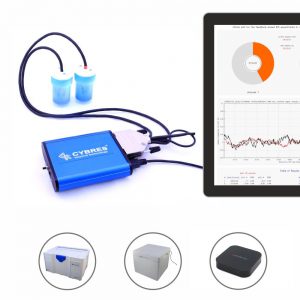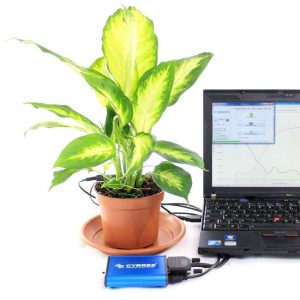Biomass sensors measure the growth dynamics of biomass, the differential sensor compares the biomass dynamics of two crop samples. These sensors use a high air-water dielectric contrast to measure the wet biomass. Differential sensor is suitable for phenotyping purposes; exploring effects of inoculation, stimulation, inhibition, stress, genetic modifications and other factors by comparing control and experimental samples at the same growth conditions. Other applications are non-disruptive biomass monitoring, biological data generation for AI systems, control of mass production in indoor farms and similar cases. The sensor allows adjusting zero points to balance differential dynamics and includes environmental sensors (light intensity, temperature and air humidity).
- Material of electrodes: PETG or ASA, anodized aluminium (mesh structure – light transparent)
- Size of a single plate: 100×200 mm, it can be customized by production on demand
- Operation frequency: 0.5-3MHz
- Sensing range: about 20cm left and right
- Zero point: adjustable
- Recommended sampling rate: once per 30-60 sec.
- Environmental sensors: air humidity – Honeywell HIH-5031-001, light intensity – EVERLIGHT ALS-PDIC15-21C, air temperature – Texas Instruments LM35
- Cable length: 1 meter
- Indoor usage
The sensor is delivered with alluminium desktop holders, alternative options are vertical/sidewise mouning holders (20 cm each part). Differential sensor works well with germination/sprouter tray 32 cm x 26 cm. Available ordering options:
- with/without MU measurement module
- differential biomass sensor with two large/large electrodes
- two small/large electrodes for biomass/water uptake monitoring (it cannot work as differnal biomass sensor)
Documentation:

